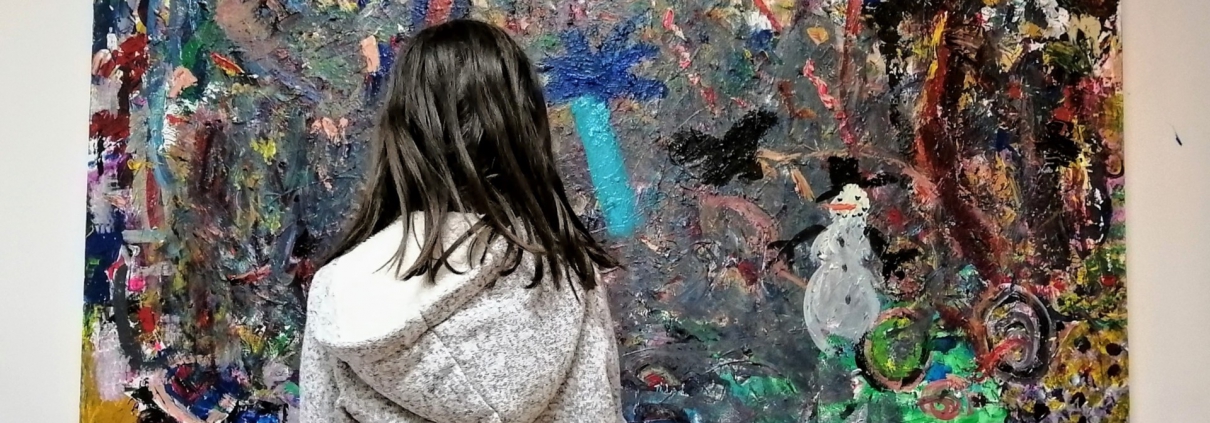Drawing outside the lines: 7 ways to encourage creative kids
When you let children express their inner world by drawing in a space that’s respectful, supportive and loving, they believe in their abilities.
Some important tips for parents and children to make art together – no judgment or criticism, but with loads of imagination
By Zohar Hajbi
Art classes in schools are disappearing, so children have fewer opportunities to express themselves non-verbally, and to experience drawing, color, and creativity in the simplest way possible. In the few opportunities left, an adult’s intervention in the process can have short- and long-term negative effects on children’s creativity; sometimes they even stop drawing altogether.
Sometimes an adult gets so involved that the painting looks like work by the parent, nursery-school teacher, or teacher, not the child’s. The end result is meant to please the adult, not the child which is a pity.
As parents, you can encourage your child’s creativity, by getting creative together.
Here are some vital tips for creating art together…
- 1. Choose the location
Find a quiet corner at home or in the yard, turn down your phone, and create an appropriate place without interruptions or external stimuli.
Collect all the equipment you need upfront, so there’ll be time for quality work with no distractions.
- Background music
Choose soft, soothing music that makes art time a pleasure. Upbeat music can make kids unconsciously restless.
Music provides inspiration and relaxation and has a subconscious impact on creativity. It encourages a creative mind-set, helping the child move across the paper in an uninhibited dance of colors.
- A warm-up for the hands
For the first five minutes, just scribble together on the paper, without thinking. Mix up colors, create layers… forget anything you know about painting.
The warm-up is a key stage for releasing the hands. It projects the message that “scribbling” is drawing too, and it’s allowed. Later you’ll see how to create art from scribbles.
- Choose a subject
Make sure to choose the first subject you’ll be focusing on. Kids often find it hard to get a blank sheet and start painting without a subject, and deciding on a subject provides a secure, relaxed start. Choose topics like circles and round shapes, happiness, animals, love – anything the child can relate to easily.
Draw freely – whatever the subject brings to your mind. Just go where your hand takes you, without thinking or planning. It doesn’t matter if the child draws something unconnected to the subject, the idea is that the child leads the creative process.
- The means is vital
Though it’s tempting, don’t intervene at all in children’s painting. Whatever they create – is great. Avoid saying “it’s pretty enough to put on the refrigerator”. Free yourself from the need to give children accurate knowledge about reality, or how to draw it.
Some statements are no-no’s, like: “Don’t draw outside the lines”, “The sun should be yellow and round”, or “The sky can’t be purple with dots”. When we intervene, it can restrict the child’s inner statement, when she wants to capture the reality around her.
Don’t be concerned that the child isn’t accurate regarding shapes and colours. That comes with time. When parents intervene, the message the child hears is that their drawing needs improving, and that undermines their confidence.
Much more important is your child’s inner world and how it’s expressed. Remember, even if you’re “unsatisfied” with the result, you’re judging it with an adult’s achievement-oriented eyes. Focus on your role as helping the child express himself non-verbally.
- The mantra: when painting, do what you like
A mantra to repeat: when painting, do what you like. Yes, you can draw a big head with tiny feet, flowers can hang down from the sky, animals can wear eyeglasses. Encourage your kids to create originally, give them a place for creative freedom, and encourage them with supportive words.
- Talk about the painting
Once you’ve finished the activity, the next important step is to let the child talk about his painting. Discuss the painting you made together, and then give him the stage to tell you what he drew and what it reminds him of.
When you give your opinion about the painting, do it positively. Talk about specific things in it. Instead of just saying “Wow!”, say “I love the way you drew the bird’s wings. The colors are amazing,” “The sky you painted reminded me of…” or: “It’s awesome the way you drew the dancing people. I can really feel them moving.”
Finally, remember that when your child can express her inner world in a space with respect, support, and love – she’ll believe in her abilities. As parents, your reinforcing, encouraging feedback lets your children love who they are. Because they’ll know that – whatever they draw or create – you accept them as they are, without “corrections” and changes to match the framework.
The author, a graduate of the Hamidrasha School of Art, offers intuitive painting workshops for children, teenagers, adults, companies and organizations.
The original article, in Hebrew, is at: https://www.ynet.co.il/articles/0,7340,L-4045366,00.html





Leave a Reply
Want to join the discussion?Feel free to contribute!